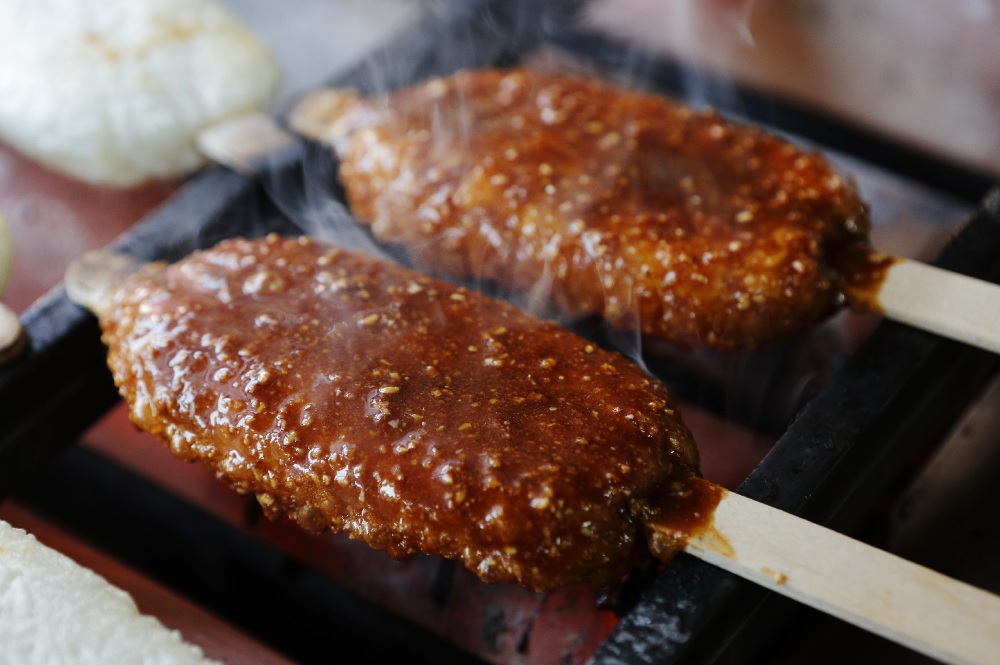Woodblock Printing @Hiroshige Museum of Art, Ena

Hiroshige Museum of Art, Ena 
Hiroshige Museum of Art, Ena
Try your hand at making your very own ‘ukiyoe’, or traditional Japanese woodblock. The museum also hosts over 1,400 pieces of ukiyoe artwork, hosting special exhibitions throughout the year including The “Tanaka Collection” ,the museum’s star exhibit — a collection of Utagawa Hiroshige ukiyoe.
- 1
- Hiroshige Museum of Art, Ena
Ena – Iwamura
Walking around Iwamura Castle Town


Walking around Iwamura Castle Town
Iwamura Castle Town is a former Edo period castle district located among scenic valleys and lush foliage. Start your walking tour from Iwamura Station and make your way towards the old street lined with historical old-timey buildings. Iwamura town’s specialty is ‘goheimochi’, a grilled rice cake skewer covered in sweet miso sauce.
- 2
- Walking around Iwamura Castle Town
Iwamura Castle

Iwamura Castle 
Iwamura Castle
Explore a castle hidden amongst the misty fog. Iwamura Castle is one of Japan’s top three greatest mountain top castles. The castle building itself has since been demolished, but the ruins and stone walls remain, giving the area an almost mystical atmosphere. Iwamura Castle’s unique appearance makes it a must-visit even for those who have already visited other Japanese castles.
- 3
- Iwamura Castle
Iwamura – Ena
Stay in Ena
Ena – Nakatsugawa
Nakatsugawa – Naegi or Kashimo
Naegi Castle Ruins

Naegi Castle Ruins 
Naegi Castle Ruins
Situated atop a mountain next to the Kisogawa River, Naegi Castle is also one of the very few in the country to be built using naturally huge rocks, unevenly piled onto each other to form the stone wall structures. It is also a great spot to view seasonal foliage, such as cherry blossoms during spring, and admire the sunset by virtue of an uninterrupted view of the horizon.
- 4
- Naegi Castle Ruins
or
Ji-kabuki Experience

Ji-kabuki Experience 
Ji-kabuki Experience
Ji-Kabuki is a more laid-back version of Kabuki that is often performed by amateur local actors in the countryside. At the Kashimo Meiji Theatre, you can catch performances of Ji-Kabuki, wholeheartedly performed by local actors who especially love to interact with the audience. This uniquely local tradition has years of history rooted in the southeastern region of Gifu.
- 4
- Ji-kabuki Experience
Naegi Castle Ruins or Kashimo Meiji Theatre – Nakatsugawa-juku
Nakatsugawa-juku

Nakatsugawa-juku 
Nakatsugawa-juku
Nakatsugawa-juku, the 45th post town along Nakasendo Trail, is a quaint little town that specialises in traditional Japanese confectionery. With more than 20 different confectionary shops, Nakatsugawa-juku takes pride in their production of wagashi (Japanese-style sweets), especially famed for kurikinton — a premium confectionary that is made from chestnuts.
- 5
- Nakatsugawa-juku
Stay in Nakatsugawa
Nakatsugawa – Ochiai Bus Stop
Sett Roads in Ochiai
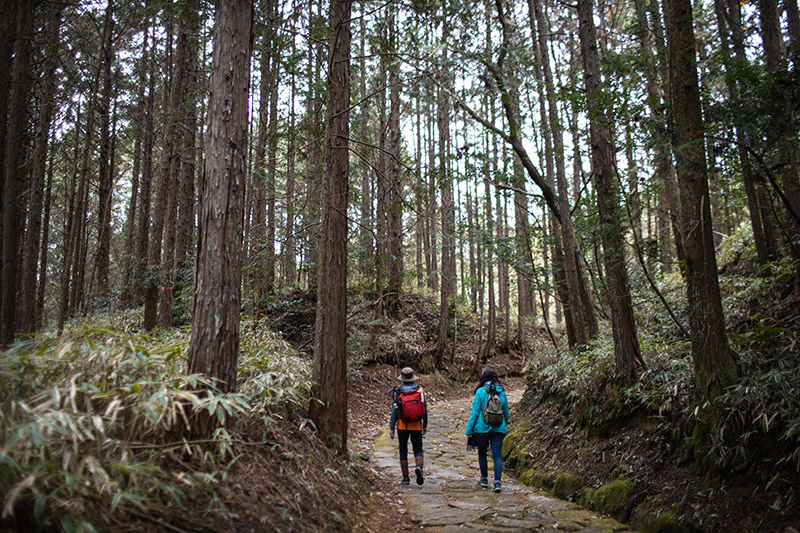
The 840-meter long cobblestone path is a designated site of historical importance. Once a common site in Japan, there are now only two cobblestone paths left — one in Hakone, and one in Ochiai. The cobblestones were used to help traveling merchants, where the stones prevented their carts from slipping on the slopes during heavy rain.
- 6
- Sett Roads in Ochiai
Ochiai-juku – Magome-juku
Magome-juku

Magome-juku 
Magome-juku 
Magome-juku 
Magome-juku
Magome-juku is a post town located at the southern end of the mountain path called Kisoji Road. In the Magome area, people customarily have been eating Shinshu soba (buckwheat noodles made in Nagano) for a long time. Here, you can stop by various stores to obtain a snack, such as gohei-mochi (skewered rice cake grilled with sauce), okaki (rice crackers), oyaki (flat baked flour buns filled with chopped vegetables or other foods), roasted chestnuts, and more.
- 7
- Magome-juku
Magome-juku – Tsumago-juku Walking
*Store baggage and leave for Tsumago-juku



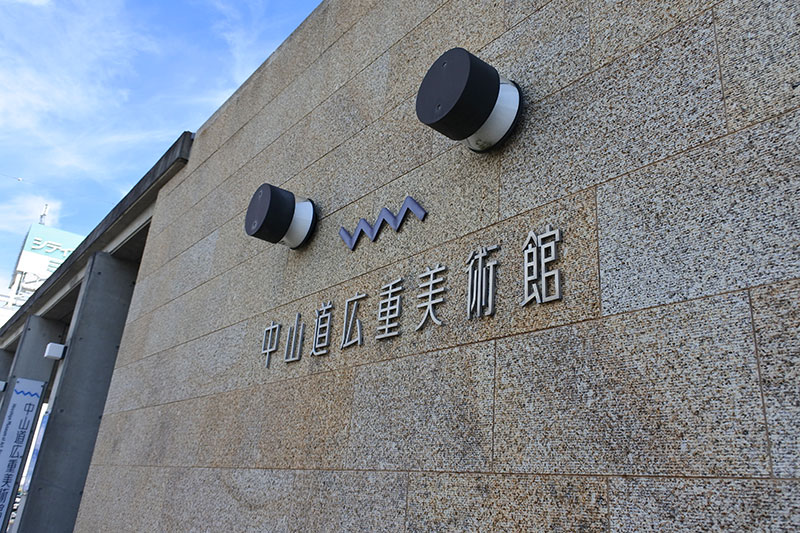

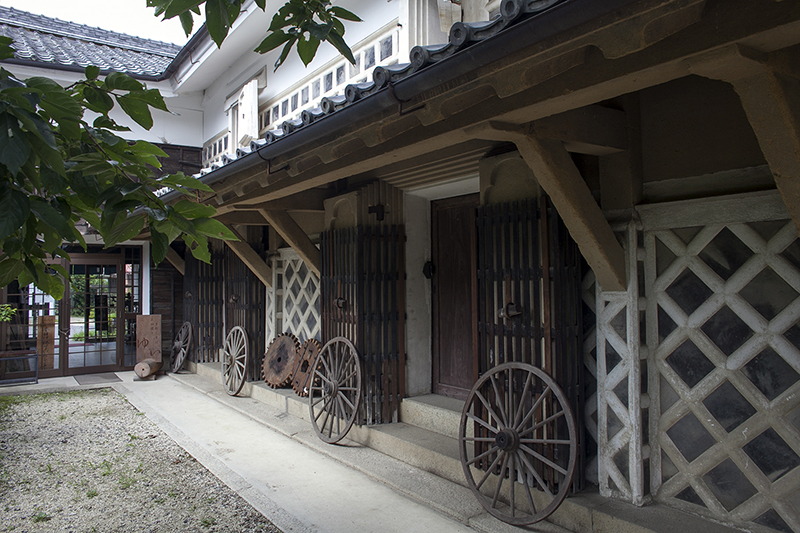







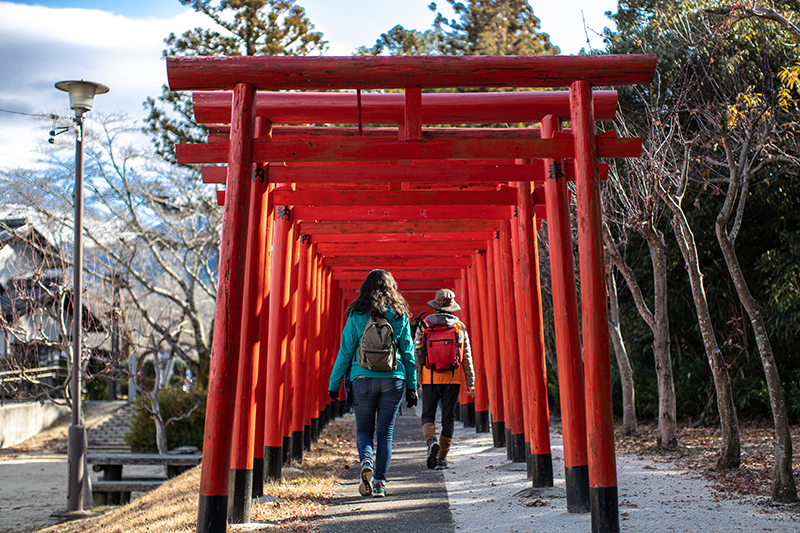

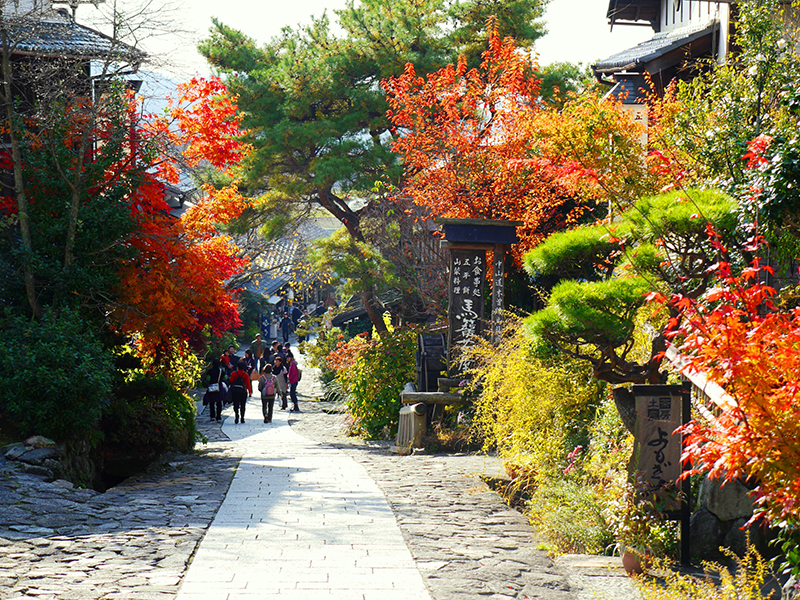



 Twitter
Twitter
 Facebook
Facebook









